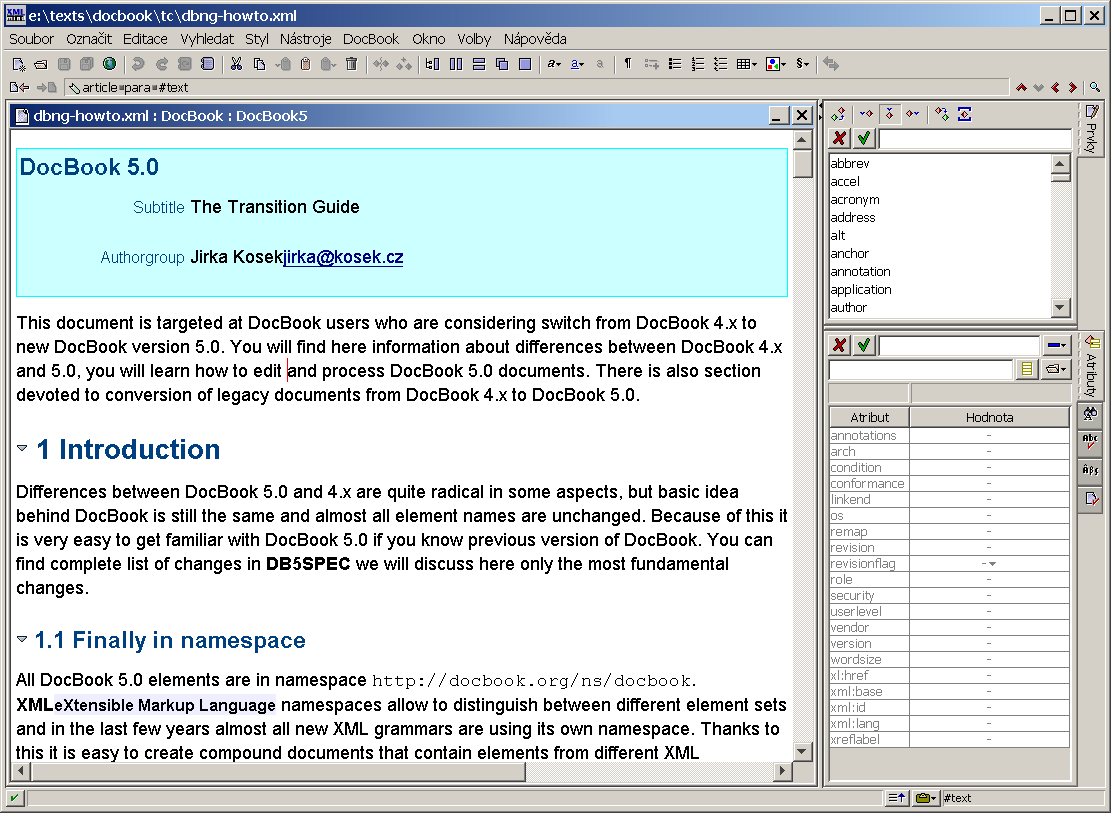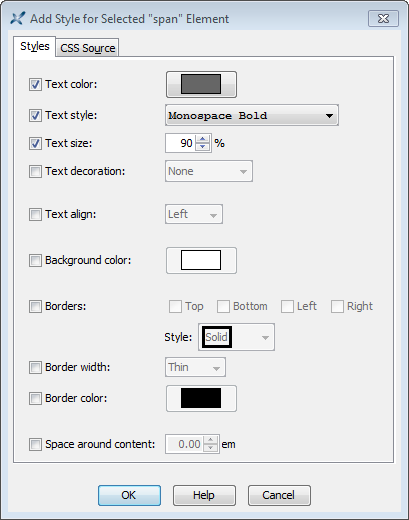Convert Docbook To Pdf Windows 10
DocBook-to-PDF conversion using free software made easy! (based on DocBook XSL and Apache FOP)
Using the asciidoctor-fopub project, you can convert any DocBook file into a nicely formatted PDF with nothing more than a Java runtime (JVM) and development kit (JDK).All the open source software required to perform the conversion is automatically fetched from the internet the first time you run it.
Doing is believing
Before we get into the goals and the technical details of the project, let’s see the conversion in action!
Apr 03, 2017 PDF to Excel Converter for Windows 10, Windows 8, Windows 7 lets you converter PDF files to Microsoft Excel for further. Need to convert PDF to Microsoft Excel for. This tutorial explains how to write DocBook files in Eclipse and how to convert these files into various output formats, e.g., to HTML and PDF.
The DocBook project on SourceForge provides XSL stylesheets to produce a number of output formats from DocBook source documents, such as HTML and PDF. Engineers at Zveno have produced an XSL stylesheet to convert a DocBook document into a MS Word doucment - this is done by transforming into WordML, MS Office 2003's XML format. Yes you can convert FrameMaker unstructured documents to DocBook XML. FrameMaker provides the tools that you need. However this process is not an off-the-shelf solution because there's no really such thing as a standard FrameMaker document. The design of your source document will hopefully use Paragraph and Character formats.
Prerequisites
The only prerequisite to perform the DocBook to PDF conversion is a Java Development Kit (JDK), which includes the Java runtime (and, naturally, an internet connection).You can use any recent JDK (i.e., Java SE 6 or better).
If Java runtime (JVM) is setup correctly, you should be able to type:
or
and see output that looks like:
If the Java Devlopment Kit (JDK) is setup correctly, you should be able to type:
or
and see output that looks like:
If not, you can install a JDK using your system’s package manager or by downloading a distribution from the Java for developers download site.
| You may encounter problems if you attempt to use the GNU compiler for Java (gcj).We recommend using OpenJDK or Oracle Java. |
| It’s not even necessary to install the JDK on your system.Simply set the JAVA_HOME environment variable to the location where you extract the distribution. |
Next, you need to retrieve the asciidoctor-fopub project.
Retrieve the project
You can retrieve the asciidoctor-fopub project in one of two ways:
Clone the git repository
Download a zip archive of the repository
Option 1: Fetch using git clone
If you want to clone the git repository, simply copy the URL of the repository on GitHub and pass it to git clone command:
Next, change to the project directory:
Option 2: Download the archive
If you want to download a zip archive, click on the Download Zip button on the right-hand side of the repository page on GitHub.Once the download finishes, extract the archive, open a console and change to that directory.
| Instead of working out of the asciidoctor-fopub directory, you can simply add the directory to your PATH environment variable. |
Next, let’s grab a file to convert.
Generate a DocBook file
If you don’t already have a DocBook file, you can generate one using Asciidoctor (or your tool of choice).

To create a DocBook file using Asciidoctor, first create an AsciiDoc file named sample.adoc in the current directory and populate it the sample content below.
Convert the AsciiDoc file to DocBook using the asciidoctor (or asciidoc) command:
You should now see a file named sample.xml in the current directory.
| You could also try these steps using the README.adoc file in the root directory of the project. |
Convert DocBook to PDF
We’re now ready to do the conversion!It’s as simple as running the fopub script in the current directory on our DocBook file.
| Since we’re executing a local script, you need to prefix the name of the command with ./. |
| If you’ve added the path to asciidoctor-fopub to your PATH environment variable, you can leave off the ./ and execute it from any directory. |
On Windows, run:
| The first time you run the command, asciidoctor-fopub has to retrieve the software from the repositories and setup the conversion application, so be patient. |
When it’s all said and done, you should now see the file sample.pdf in the current directory.Open that file with a PDF viewer to see the result.
As you can see, all the details of the conversion are hidden behind the scenes.You get to focus on getting the job done, not worry about the mess that has to be sorted out to use Apache FOP correctly and get a decent-looking document.
Customize the output
When you work on many documentations projets in parallel, you will probably need different outputs.
One needs a picture in the book title page
The other needs a special text at the bottom of this page
One needs the default Asciidoctor style
The other uses the Colony style
In order to work on different documentation projects in parallel, you need to have different docbook-xsl directories.
Copy the docbook-xsl directory from the fopub install directory to your documentation path, /path/to/custom/fopub.
Figure 2. Content of the docbook-xsl directoryUpdate the files you want in this directory
- For example if you want to use Colony style
You delete Asciidoctor theme, Foundation theme and you uncomment Colony theme in the common.xsl file.
Then you specify this directory when you launch the output generation :
fopub option flags
tells fopub which docbook-xsl directory to use (optional, defaults to location inside fopub installation)
tells fopub which output to produce (optional, defaults to pdf)
prints usage
Motivation
The asciidoctor-fopub project aims to provide a simple mechanism for converting DocBook to PDF.The plan is to use some form of this project to handle the DocBook to PDF conversion in Asciidoctor.We hope it’s generally useful outside of Asciidoctor as well.
If you’ve ever had to do this conversion, you will appreciate how overly-complex it is.It requires fetching the right combination of software (including the right versions), putting all the files in the right location and associating them together using a catalog and passing in the correct parameters.It’s boring and tedious.This project handles all that magic so you don’t have to.
In addition to making the conversion work, the project includes the following features that are often left out:
Works with DocBook generated by AsciiDoc (supports all AsciiDoc processing instructions)
Syntax highlights source code listings using XSLTHL (including a highlighter for AsciiDoc source)
Scales down images to fit within the width of the page
Applies (configurable) formatting and styling that’s consistent with the Asciidoctor themes
Loads and embeds system fonts necessary to support the themes (Arial, Georgia and Liberation Mono)
Applies configuration to embed SVG-based admonition icons and callout marks
Works without an internet connection (once the initial run is complete); drastically speeds up execution
Works from any directory (planned)
There’s a lot of research that went into making all that happen for you :)
| One of the most important features of this tool—and one of the most difficult to get right—is that it works offline.By default, XSL processors fetch all necessary resources from the internet.Since these files are large and reference many other files, fetching them from the internet is exceptionally slow and a waste of network bandwidth.The fopub tool carefully ensures that the processor has all the files it needs (on the first run) and thus keeps it from reaching out to the internet while it performs the conversion. |
Technical details
The conversion’s key players: Apache FOP and DocBook XSL
The main goal of this project is to download, configure and execute Apache FOP to handle the conversion from DocBook to PDF using the DocBook XSL stylesheets.You can see from the first part of the DocBook XSL book what a complex proposition this is.
The purpose of DocBook XSL is to provide a standard set of XML transformations (XSLT) from DocBook to several presentational formats, one of which is XSL-FO.
Apache FOP (Formatting Objects Processor) is a print formatter driven by XSL formatting objects (XSL-FO) and an output independent formatter.It is a Java application that reads a formatting object (FO) tree and renders the resulting pages to a specified output.The primary output target is PDF.
Apache FOP also includes an XSLT processor (Xalan) that handles the conversion from DocBook into the intermediatory XSL-FO format that the print formatter uses to create the PDF.
When the software is all setup, we are ultimately running a command in the fopub script similar to this one:
In reality, it’s more complex.You can see the full command at the bottom of the fopub script.
Source highlighting using XSLTHL
Convert Windows Document To Pdf
Readers have come to expect source code to be highlighted so it looks the same way in the document as it does in their source code editors.XSLTHL provides source highlighting for PDF output.
XSLTHL integration is a well-hidden feature in the DocBook XSL project.It requires a Java-based XSLT processor (like the one embedded in Apache FOP) to use it.Activating it requires passing special parameters to the processor that specify the location of the configuration file and a flag to turn it on.
When everything falls into place, as it does with the fopub script, you get nice syntax highlighting in your PDF file and happy readers.
Priming the pump with Gradle
Setting up a Java application is no small feat.So what fetches the software and puts it all in the right place?That handywork is performed by Gradle.
Gradle is a Java-based automation and build tool that specializes in setting up Java applications (among other capabilities).Gradle can fetch files from remote repositories, move them around, create start scripts and assemble an application distribution.
We are using Gradle to prepare a Java application into the build/fopub directory that the fopub script can execute.
You may be wondering why Gradle isn’t a prerequisite of this project.The answer is that the Gradle project provides a tool that can bootstrap Gradle from nothing.That tool, gradlew, is included with the project.It gets invoked the first time you run the fopub script.Magic.
And that’s essentially what this project is all about, magic.Converting from DocBook to PDF shouldn’t be hard.We are doing our best to hide those details so that it’s as simple as it should be.
Software versions

| Software Project | Version |
|---|---|
Apache FOP | 1.1 |
DocBook XSL | 1.78.1 |
Apache Commons XML Resolver | 1.2 |
Xalan | 2.6.0 |
XSLTHL | 2.1.0 |
Gradle | 1.7 |
Contributing
In the spirit of free software, everyone is encouraged to help improve this project.
To contribute code, simply fork the project on GitHub, hack away and send a pull request with your proposed changes.
Feel free to use the issue tracker or Asciidoctor mailing list to provide feedback or suggestions in other ways.
What Is Docbook
Authors
asciidoctor-fopub was written by Dan Allen.It builds on prior work done by authors of the AsciiDoc, jDocBook and PressGang projects.
Docbook Format
Copyright
Copyright © 2013 Dan Allen.Free use of this software is granted under the terms of the MIT License.